The amazing world of plants that fills the planet brings a lot of joy to flora fans. However, some people only like hypoallergenic flowers with a subtle aroma. In the spring, when the garden is filled with colorful colors, real torture begins for them. It’s sad, but the torment ends in late autumn, along with the fallen leaves. What will help you stop seasonal suffering and enjoy the beauty of nature 100%? Maybe declare war on flowers that cause allergies? There is a more humane way. First of all, let's find out why plants cause allergies? And then we will get acquainted with popular hypoallergenic flowers that can be grown in the garden or indoors.
On this topic:
The best balcony flowers for the sunny side
Aug 14, 2020
Saving green oases: how and what flowers to choose for...
Jun 7, 2020
Asters - planting and care in open ground for...
May 13, 2020
Bulbous garden flowers - photos and names of the most...
May 8, 2020
BACK FORWARD 1 of 59
Can you be allergic to houseplants?
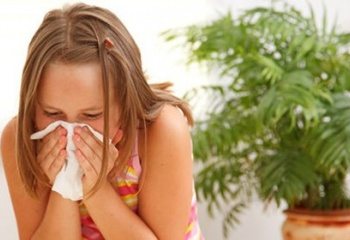
It is impossible for lovers of home flowers to say that some plants provoke allergic symptoms and should not be grown at home, but these are the ones that can, it all depends on many factors, these include:
- allergic predisposition of a person, which manifests itself to food, household chemicals, dust, animal hair and other irritants;
- living conditions (air pollution, tobacco smoke, etc.);
- a type of indoor plants that a person grows at home.
Household plants that cause allergies provoke symptoms of hay fever in humans, which is the name of the body's reaction to plant pollen. Basically, signs of sensitization appear on outdoor plants, which include trees (for example, birch), shrubs and weeds that bloom vigorously in the spring and summer, but indoor flowers also cause similar symptoms.
Often people attribute to themselves a negative reaction to flowering indoor plants, not realizing that the allergy is not related to pollen, but is provoked by the soil in which the flower grows, fertilizers and fertilizers found at home. Signs of a pathological reaction depend on the location of the irritant - some people tolerate the pollen of the plant, but react violently to touching the roots and stems, or to the juice released from the leaf.
On a note! When identifying specific plants that provoke signs of sensitization, it is necessary to pay attention to the frequency of the reaction, the time of occurrence and the events associated with it (inhalation of the aroma of the flower, replanting, fertilizing, damage to the stem or leaf and the release of sap).
Causes of allergies

Flower intolerance is associated with sensitivity to protein components (proteins) and essential oils, which are contained in:
- in pollen;
- in juice;
- on stems;
- in the roots.
The patient’s immune system reacts to them as a threat and, upon contact, triggers the production of antibodies - special protective compounds that can be detected through laboratory testing.
The most important are pollen particles that spread with air currents, settle on the mucous membranes of the nose and eyes and provoke an inflammatory process. When thinking about what flowers you may be allergic to, you need to evaluate a specific plant in accordance with the criteria:
- Bright color.
- Intense, almost suffocating smell.
- The presence of wide-opening buds with numerous stamens.
If all the mentioned features are present, most likely before...
RECOMMENDED VIDEO TO WATCH:
Why do indoor flowers cause allergies?

Direct contact with leaves, stems and roots can cause an unexpected reaction, so people who handle plants with gloves, use disposable tools and do this near food rarely complain of allergies.
The presence of a plant indoors that causes signs of sensitization in at least one family member is dangerous, especially if the baby reacts violently to the flower. You need to find out which plant provokes the reaction and remove it from the house. So why can the human body react violently to some flowers and calmly perceive others?
A flower is a living creature, it can breathe, release respiration products into the atmosphere, and reproduce. During the period of pollen release, it is in the air, getting on the mucous membranes of the eyes, nose, and skin. This causes sensitization in sensitive people.
Allergens are found not only in pollen, but also in stems and leaves, so slight damage to the plant and the release of juice can also cause an unexpected reaction. Often a person reacts not even to the flower itself, but to the accumulations of mold in a pot with a plant that is not properly cared for.
Causes of allergies
Flowers surround us everywhere.
Cultivated varieties are planted in flower beds within the city to improve the appearance of the streets, creating a contrast with the dusty gray asphalt. Wild species grow in fields, in unkempt garden plots, at the edge of forests - anywhere where seeds can be carried by wind currents, as well as birds, insects and animals. It is difficult to imagine a holiday without flower arrangements, and according to existing traditions, it is customary to celebrate the arrival of special dates by presenting bouquets. In addition, for many people, contemplating bright peonies, fragrant roses or field daisies is a way to relax and immerse yourself in pleasant thoughts. However, if you develop an allergy to flowers, any contact with them can seriously threaten your health. Therefore, it is worth finding out what symptoms are an alarming signal indicating the presence of pathological sensitivity.
The content of the article
Which indoor flowers cause allergies?
To prevent an unexpected reaction of the body to green decorative elements, a person who wants to start breeding them needs to familiarize himself with the list of the most dangerous ones. So, what indoor plants that cause an allergic reaction should not be grown in the house, especially if there is a strong predisposition to sensitization:
- Plants of the Kutrov family are razia, strophanthus, plumeria, carissa, oleander, adenium, dipladenia. Any part of these plants, be it roots, stems or leaves, can provoke powerful sensitization if a small piece gets inside. Manifestations are dangerous: heart dysfunction, fainting, diarrhea, since the listed plants contain powerful toxic components.
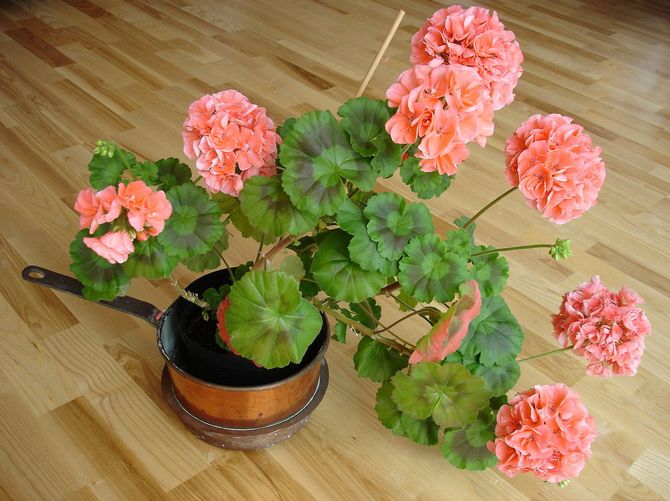
Popular among flower lovers, geranium can also cause allergies. - Lily - a flower emits a large amount of carbon dioxide, especially in the evening and at night, so people who grow this plant often complain of causeless headaches and insomnia. If you accidentally swallow part of a lily leaf, you can be poisoned.
- The aroid family - monstera, calla lilies, spathiphyllum, dieffenbachia, alocasia, calladium and others. The leaves and stems contain powerful toxic substances - oxalic acid and aspargine; if the juice comes into contact with the mucous membrane of the eyes, conjunctivitis will develop, and contact with the skin causes redness and irritation.
- Nightshades - capsicums, brovallia, brunfelsia. The most dangerous is false pepper nightshade, which is most often grown at home by flower lovers - its attractive bright red fruits make them want to eat them, especially in pets and children, which can lead to nausea and indigestion.
- Euphorbias - croton, jatropha, poinsettia, akalifa. If the juice of these plants gets on the skin, a burn is noted; ingestion leads to swelling of the larynx and upset of the digestive system. If the juice splashes into the eye, it can cause temporary blindness.
Which indoor plants also cause allergies and are capable of causing the strongest reaction will be discussed further. Potentially dangerous plants also include Gesner tulip, tuberose, ficus, cyclamen, hemanthus and belladonna amaryllis. The essential oils of Eucharis and Krinum plants contain components that cause a violent reaction in humans; Kirkazon flowers have an original shape and color, but contain many toxic alkaloids. Inhalation of fern spores can cause allergic rhinitis, tracheitis or bronchitis.
Attention! The most popular flowers kept in the house are geranium and pelargonium, but for sensitive people they can cause dizziness, rashes on the body and suffocation. Even seemingly safe plants sometimes cause violent sensitization, this must be remembered.
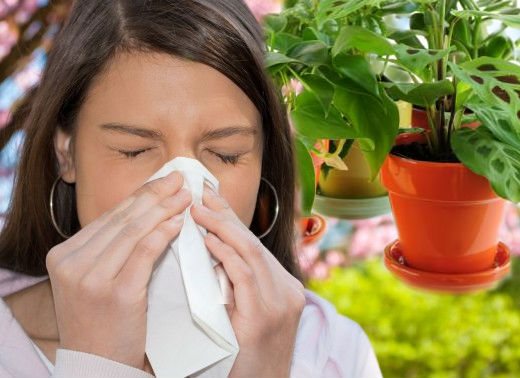
Houseplants are the strongest allergens
It was listed above which house flowers can cause allergies if in direct contact with them, for example, during transplantation or if the integrity of the stems and leaves is damaged. However, many flowers provoke a violent reaction even by their simple presence in the room; they are considered the most dangerous for allergy sufferers:
- evergreen ivy is completely poisonous;
- Sims or Indian azalea – if a part of the plant, which attracts with its beautiful bright flowers, gets inside, it provokes convulsions, vomiting and severe poisoning;
- aglaonema - has a rich palette of shades, the leaves of the flower are covered with small villi, which cause a strong skin reaction when touched, and inhaling its aroma during flowering provokes dizziness and attacks of nausea;
- Gloriosis – poisonous through and through, can cause kidney failure and severe poisoning;
- plumeria - its beautiful white flowers are no less dangerous than the stems and leaves, causing negative consequences in the form of nausea, diarrhea, and confusion.
The ordinary Kalanchoe flower, known for its medicinal properties, can also cause burns to the mucous membrane and poisoning if you prepare nasal drops or internal remedies from it, so you should make sure there is no reaction before use.
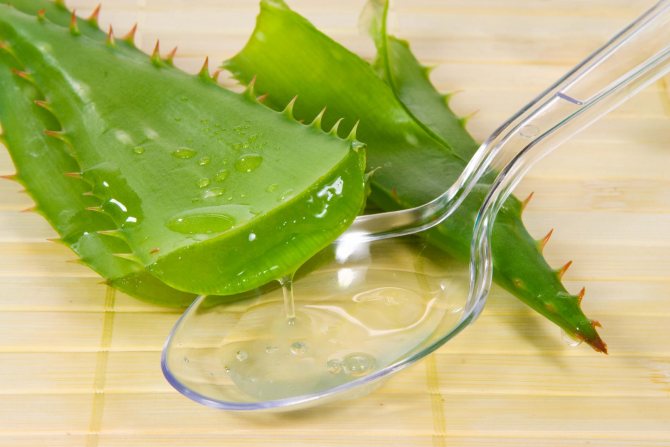
Even medicinal plants can cause allergies
Choosing Hypoallergenic Flowers Wisely
How pleasant it is to contemplate lush greenery in summer cottages, homes, offices, hospitals and educational institutions. Living cultures carefully filter the air, filling it with oxygen. In addition, they calm the human nervous system and emphasize the design of the garden and room. However, you should not choose crops only by appearance; it is important to consider the degree of influence on the body.
Plants for indoor spaces
Let's look at the most popular indoor flowers for allergy sufferers that can be used to decorate your living space:
- Chlorophytum crested;
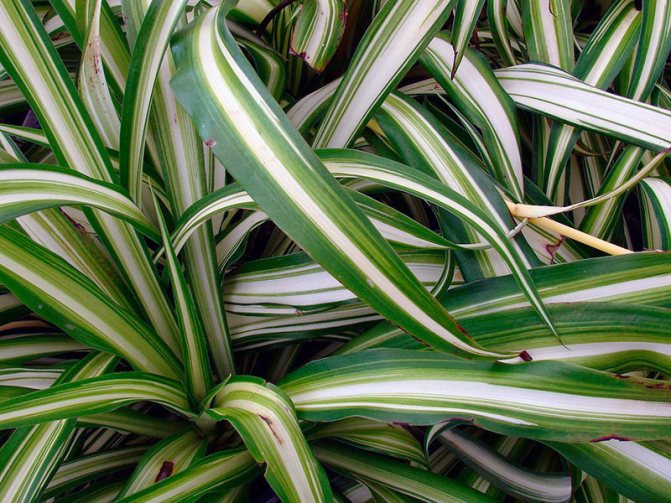
- dracaena;
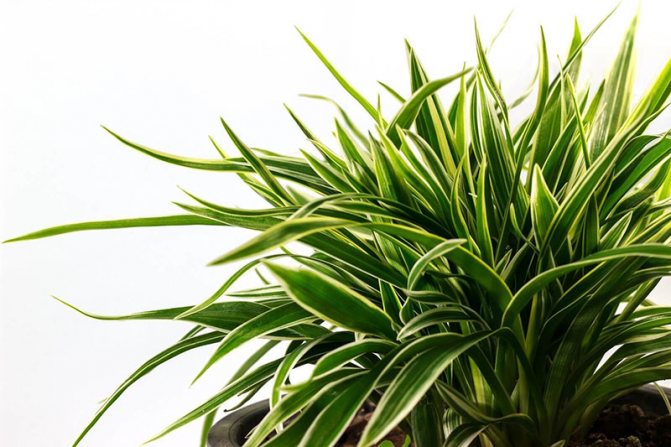
- aloe;

- lemon Tree;
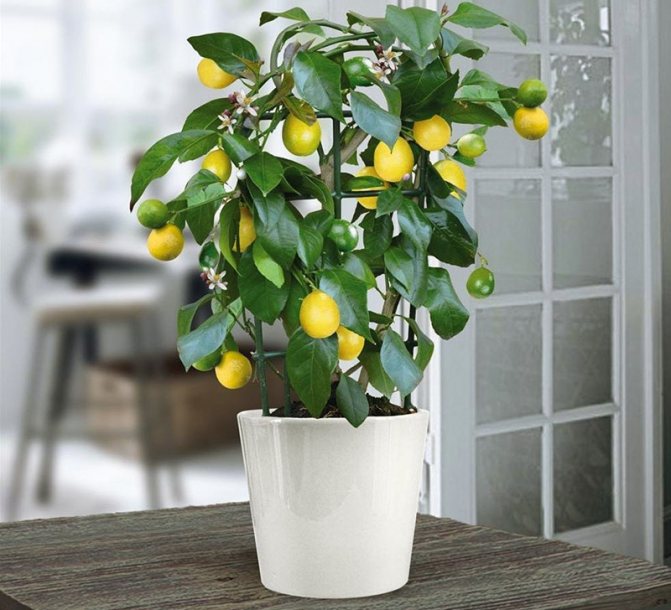
- large-flowered pelargonium;
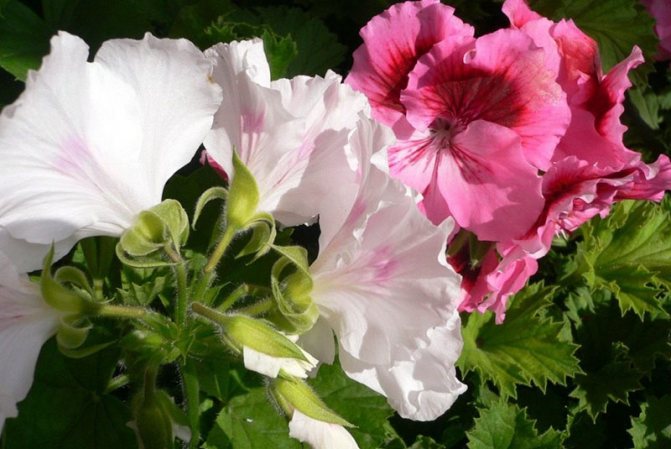
- nephrolepis;
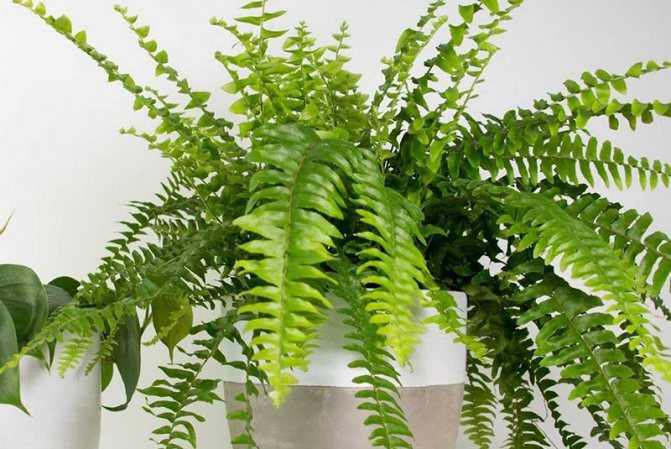
- all types of begonia;

- violets;
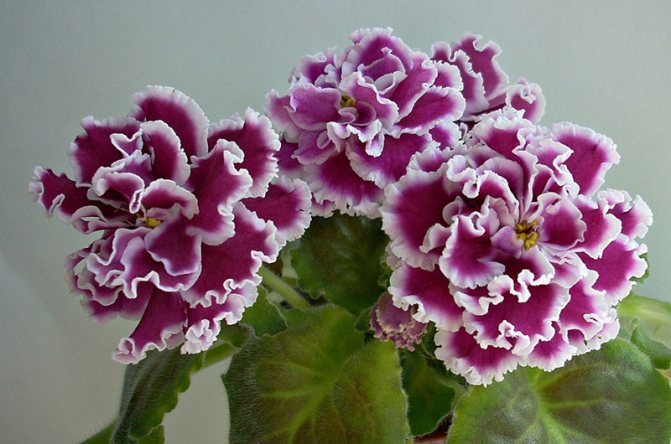
- spathiphyllum.
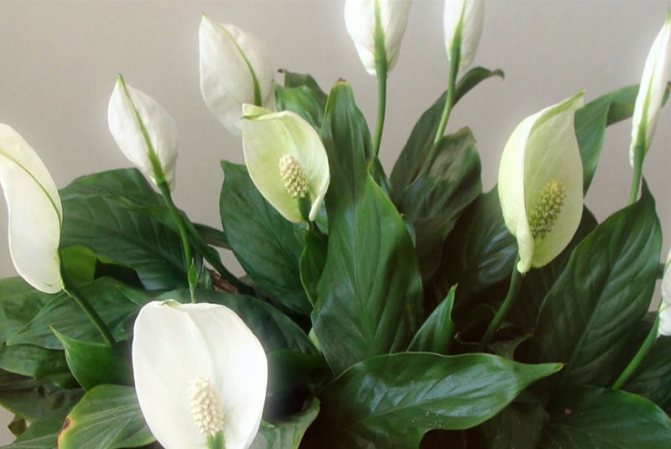
Of course, there are many more than on this list. The main thing is that they exist. Therefore, people who are allergic to flowering plants can also create lush plantings in their home.
On this topic:
Tree hydrangea - varieties with photos, selection for...
Flower ladder will decorate your home and garden
Adorable flowers in a bottle for a colorful interior
DIY preserved flowers for the soul and as a gift
BACK FORWARD 1 of 58
You cannot grow many flowering crops in the bedroom. When pots are frequently moistened, fungi appear in pots that are hazardous to health.
Creating a safe garden
Some fans of ornamental plants in their summer cottages also encountered a similar problem. Popular flowers that decorate flower beds cause allergies in many people.
These include:
- lilies;

- lilies of the valley;

- asters;
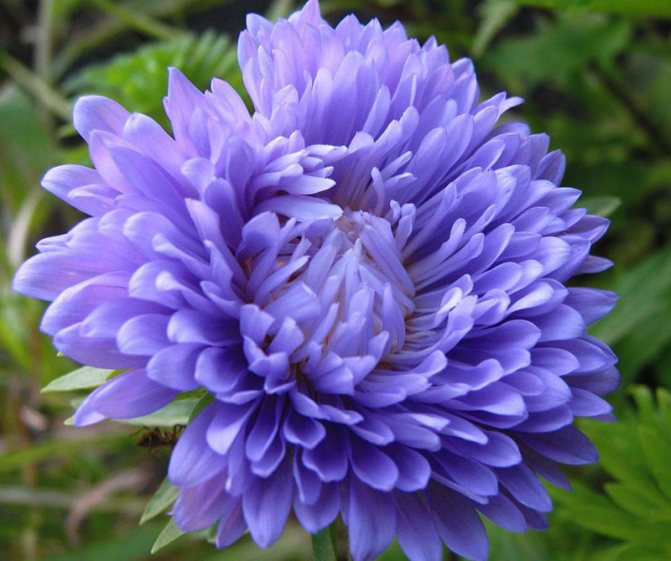
- chrysanthemums;
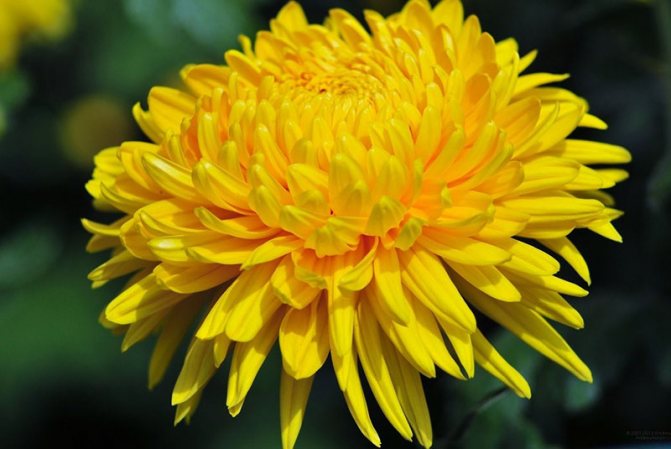
- daisies;
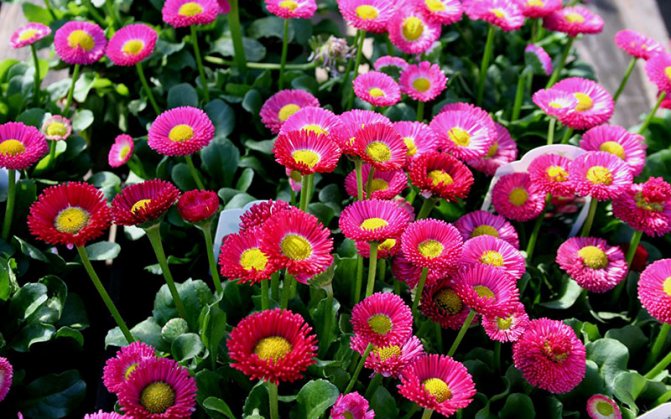
- marigold;

- calendula.

During flowering, they release pollen, which settles on the mucous membrane, causing illness. In addition, allergies are caused by small elements of plants: scales, hairs, pubescent foliage and stems. Even pieces of greenery from trimmed shrubs and lawns have a detrimental effect on the condition of sensitive people. Is it possible to create a garden for allergy sufferers that does not contain “dangerous” plants? Fortunately, there is a way out. The main thing is to choose your crops wisely and learn a few rules.
First of all, there should be no drafts on the site. To reduce pollen volatility, an additional reservoir is installed. The territory of a country house is surrounded by a high fence or hedge of forest trees.
Ground cover crops are used to cover lawns:
- moss;

- creeping speedwell;
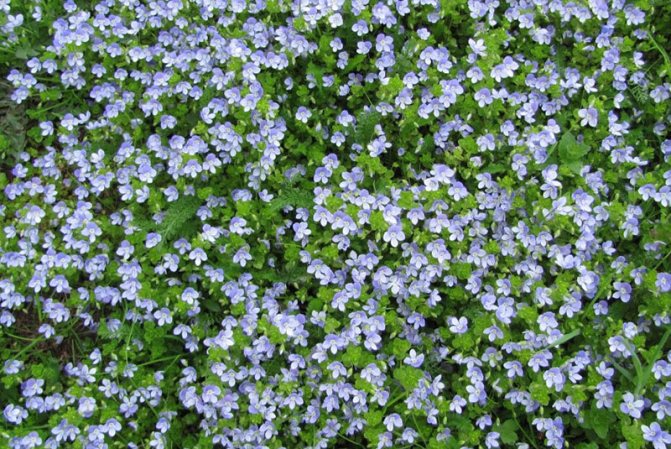
- tenacious;
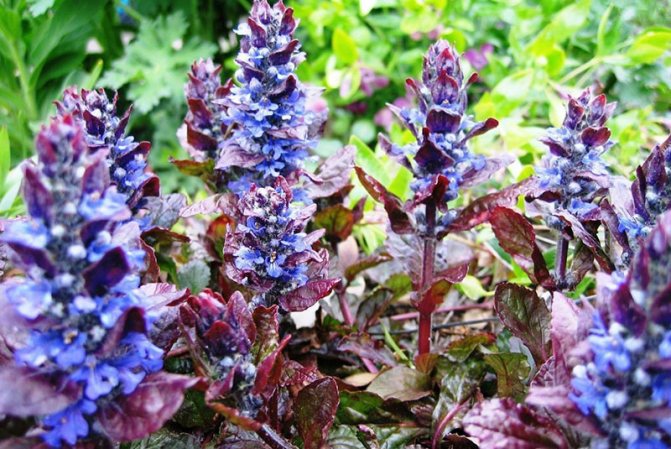
- mazus.
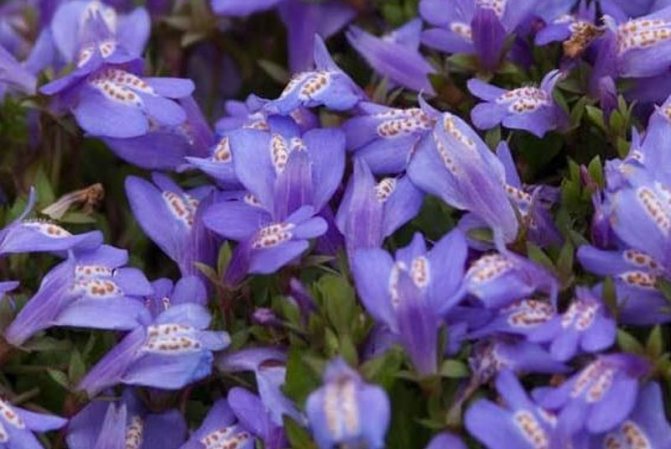
Various types of succulents do not cause allergies because they produce a tiny amount of pollen. A lush carpet is made from periwinkle or white clover. Ferns, heuchera and awl-shaped phlox are suitable.
Of course, you need to constantly ensure that allergy-causing weeds do not enter the garden, such as:
- meadow fescue;
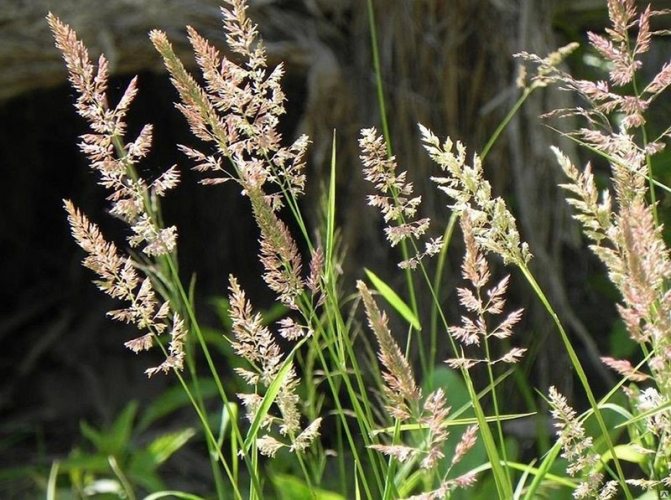
- wheatgrass;

- sagebrush;

- quinoa;
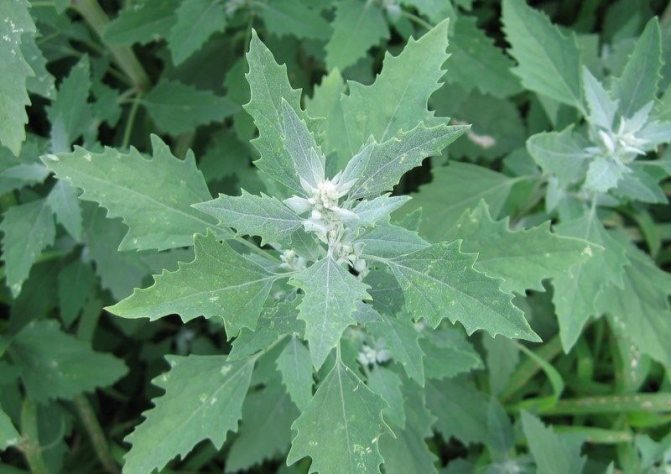
- dandelion.
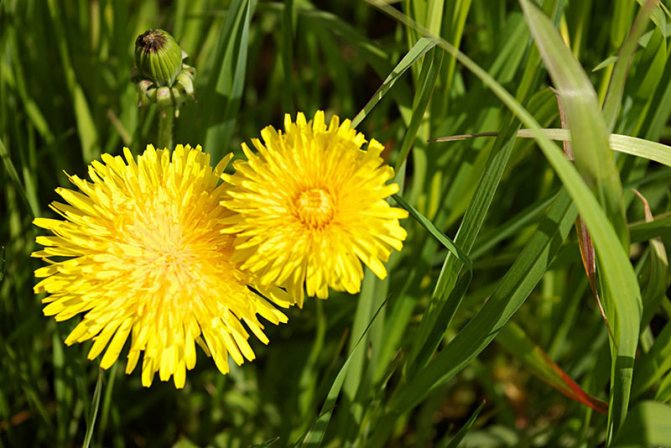
Particular attention should be paid to choosing garden flowers for allergy sufferers that do not irritate the mucous membranes. Fortunately, there are a huge number of them, both annual and perennial options. They will delight your heart throughout the season.
The following can be safely grown in flower beds:
- crocuses;
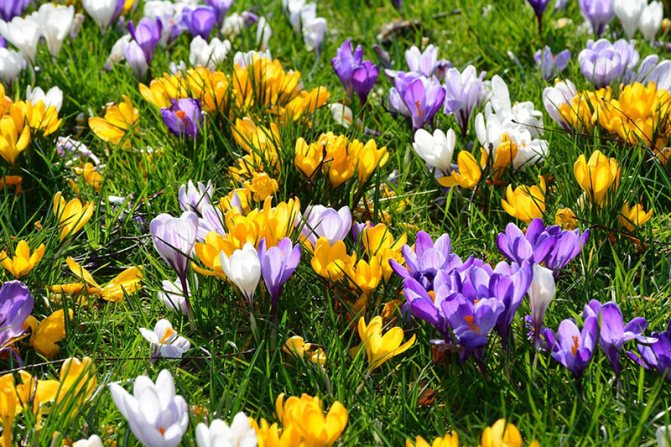
- irises;

- pansies;
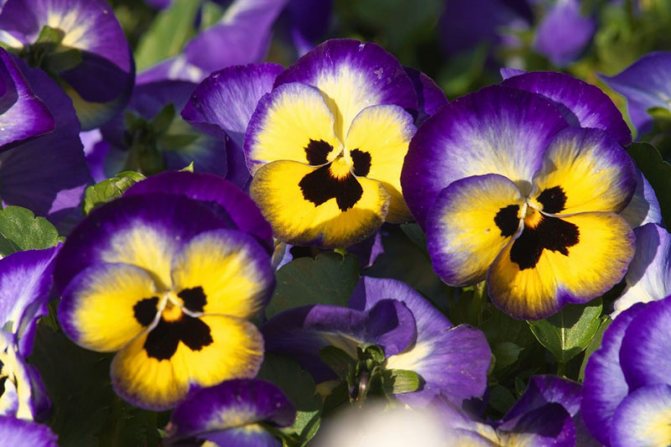
- snowdrops;

- forget-me-nots;
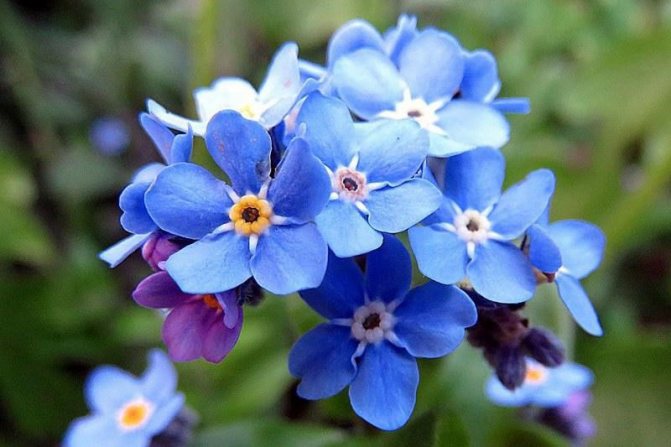
- petunia;
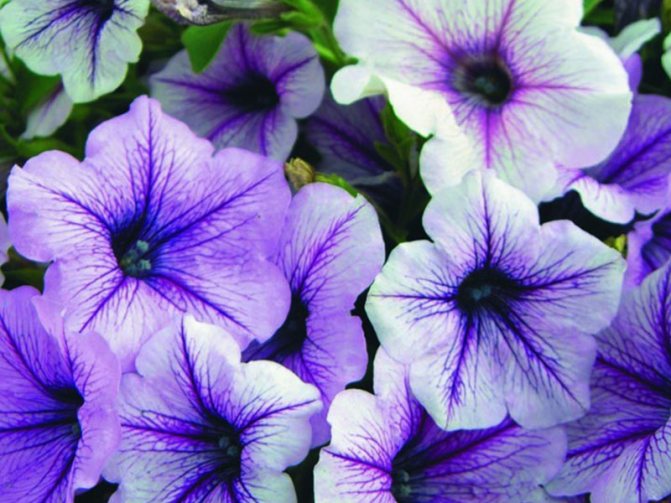
- poppies;

- delphinium.
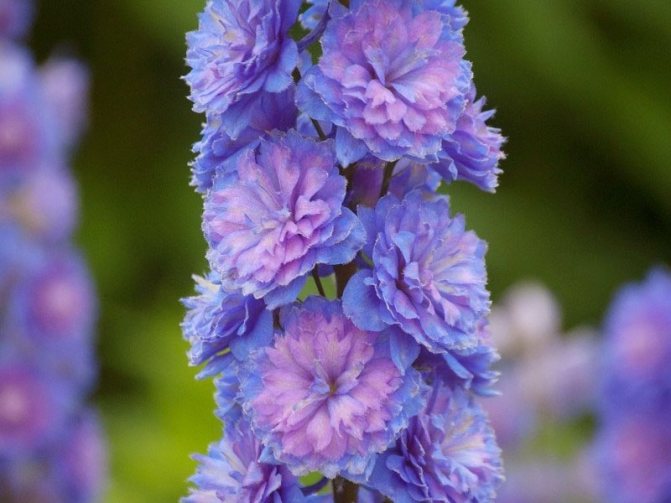
Some herbs that have a specific aroma do not cause problems. Sage, mint, rosemary and lavender will fit into the landscape. As you can see, correctly selected hypoallergenic flowers bring invaluable benefits to flora fans. In such an environment it is easy to relax, recharge your batteries and breathe fresh air. The main thing is to approach the matter wisely when choosing suitable plants.
Houseplants that do not cause allergies
In addition to indoor flowers that cause an allergic reaction, there are plants for which the body’s negative reaction to their presence is not typical; it is even useful to keep them to saturate the living space with oxygen:
- lemon tree - everyone knows about the healing properties of this product. The leaves of the plant growing in the house saturate the room with essential oils and phytoncides, which facilitate breathing, improve mood and activate brain activity;
- aloe - widely used for medicinal purposes, the flower is unpretentious, is a powerful immunostimulant, suppresses the proliferation of microbes and cancer cells, grows quickly and activates vitality. Neither its juice nor its leaves cause a negative reaction;
- pelargonium species large-flowered and zonal - purify the air, kill pathogenic flora, repel flies and mosquitoes;
- nephrolepis - belongs to the genus of ferns, but is distinguished by beneficial properties - absorbs radiation from household appliances (TVs, computers), releases large amounts of oxygen, improves mood and brain activity;
- begonia - all types of flowers, except the ever-blooming one, suppress the activity of bacteria, moisturize and purify the air in the house, and release a lot of useful phytoncides;
- chlorophytum is an easy-to-care flower that purifies the air from dust and germs and combustion products. If you fertilize the soil with Activated Carbon during replanting, the beneficial properties of the plant will become stronger.
Many people love to keep flowers in their bedroom, but don't know which ones are best. It is better to choose begonia, aloe, violets, laurel, rosemary or lavender. Balsam, eucalyptus, hibiscus, and tangerine are more suitable for a children's room.
It is important to know! You should not grow a large number of home flowers in one room, since frequent watering increases the humidity in the room, which leads to the establishment of fungi.
Non-hazardous plants
The least complaints are received by pink, lily, cacti and mulberry plants (for example, ficus). These plants are preferable for you if you are allergic and do not yet know which representatives of the flora it is better not to contact.
Which plants give the reaction least often:
- Dracaena. This is a completely safe perennial plant that does not require special care. Neither pets nor children will suffer from it.
- Laurel. A safe and pleasant-looking plant with a familiar scent. The leaves can be dried and used as spices.
- Aloe. There is still a “house doctor” in every second home even without any advice. Even the bitter juice from the fleshy leaves is not dangerous.
- Croton. A beautiful, long-lasting and large flower, similar to a ficus, but not one.
- Spathiphyllum. Spathiphyllum flowers are similar to calla lilies, but are completely acceptable for keeping near allergy sufferers. A beautiful and unpretentious option, but it requires free space.
All this is just a superficial list of the most popular plants. If you want, you can easily choose a plant for yourself, even if you suffer from very severe allergic reactions.
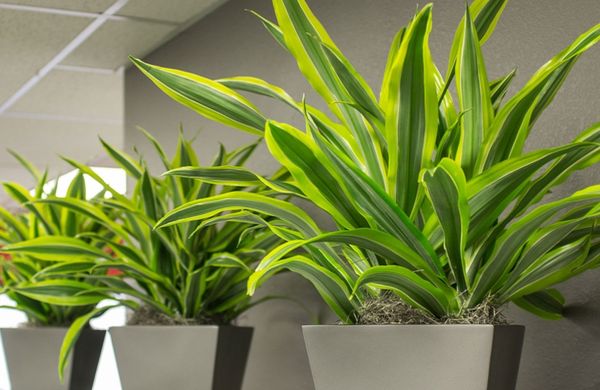
Symptoms and manifestations of allergies to house plants

If a person is allergic to indoor plants for the first time, it is difficult for him to distinguish the disease from a common cold. But it is worth knowing about the symptoms of sensitization, since the pathology in its advanced form leads to dangerous consequences in the form of bronchial asthma, cough, choking, laryngeal edema, and sometimes death. So, the signs of hypersensitivity to plants are as follows:
- lacrimation, redness of the eyeballs, swelling of the eyelids;
- sneezing, rhinorrhea (increased production of mucus in the nose);
- irritable dry cough;
- itching of the skin and nasal mucosa;
- nausea and vomiting (in people with hypersensitivity, gastrointestinal diseases and children);
- skin rashes in the form of dermatitis, urticaria, neurodermatitis (dryness, erosions, areas covered with scales and ulcers appear on the skin).
If you notice such signs, you should seek medical help. Severe allergies can be accompanied by swelling of the mucous tissues of the nose and larynx, which is fraught with Quincke's edema and respiratory arrest; with a mild form of the disease, there is a risk of it becoming chronic.
Treatment of allergies to houseplants
To get rid of signs of allergy to house flowers, you need to consult an allergist. First, it is worth analyzing which of the plants are currently undergoing a flowering period, which have recently been replanted, and identify the supposed “culprits” of sensitization. The doctor will advise you to limit contact with the plant that causes the body’s reaction and prescribe standard treatment for an allergic reaction:
- antihistamines - Loratadine, Zyrtec, Claritin, Diazolin, Xyzal, Suprastin;
- preparations that stabilize mast cell membranes – Nedocromil, Ketotifen, Cromoglycic acid;
- enterosorbents – Enterosgel, Smecta, Activated carbon;
- hormonal sprays for the treatment of nasal manifestations in the form of a runny nose and nasal congestion - Flixonase, Beconase, Avamis, Nasobek.
In particularly severe cases of allergies, desensitization and plasmapheresis methods are recommended. The first method is based on gradually accustoming the body to the irritant by daily introducing it under the skin in a certain dose (the portion of the substance is increased every day). The method is long, but effective, capable of eliminating signs of pathology for years. Plasmapheresis is a method of blood purification indicated for patients with symptoms of moderate and severe forms of allergies; to achieve positive results, 3 to 5 procedures are necessary.

Treatment with folk remedies
Folk remedy therapy is a good addition to drug treatment for allergies; the following recipes are among the most popular and effective:
- grind burdock and dandelion roots in an amount of 50 grams, pour 600 ml of boiling water and leave for 10-12 hours, then boil the composition. Take the medicine 120 ml, three times a day, for at least 1.5-2 months;
- yarrow decoction - prepared by brewing 30 grams. herbs with a glass of boiling water, take it after filtering and infusing for about an hour, 50 grams each. 3-4 times a day;
- 50 gr. crushed celandine is poured into 400 ml of boiling water and infused for 5-6 hours, then the decoction is drunk twice a day, 50-60 ml;
- pour boiling water over nettle leaves and leave for 3 hours (nettle – 100 g, water – 300 ml), drink 120 ml of the composition after each meal, for at least 30 days in a row;
- Shilajit is a powerful folk remedy for allergies. 1 gram is diluted in 1000 ml of boiling water. means, then drink it 100 ml once a day, washed down with warmed milk.
For skin manifestations of allergies, baths with a decoction of string, calamus rhizome, dry thyme, plantain herb, valerian root (
Prevention
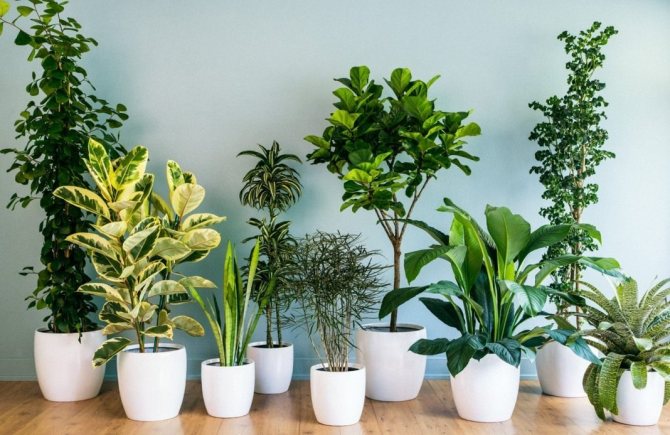
To reduce the risk of developing allergies to plants living in rooms, it is necessary to choose non-hazardous types of flowers that have the least toxicity and do not contain poisons. If plants are not cared for properly, they become collectors of dust, fungi and mold spores, leading to an increased risk of sensitization. Here is a list of measures that will prevent dangerous consequences from houseplants:
- timely watering and removing dust from leaves;
- irrigating the plant with water from a spray gun;
- selection of the right pot, appropriate size;
- removing dried parts of the stem and leaves;
- reducing the amount of chemical fertilizers added to the soil mixture;
- replanting, loosening, pruning leaves using latex gloves;
- Do not eat or drink near potential irritants during pollen release;
- Do not damage the stems and leaves of flowers;
- Young children should not be allowed near plants that provoke attacks of sensitization.
People who are prone to food allergies or who react to dust, mold spores, animal hair, or tobacco smoke should choose the safe plants discussed above as green pets to reduce the risk of sensitization.
First of all, don't panic!
Pollen that is visible to the eye should be removed from the bouquet. This will help relieve the attack. You can also spray the flowers with water to kill any flying pollen. As a last resort, you can remove all allergens from the composition and enjoy neutral colors.
Do you want to please a loved one with a special bouquet, composed with care for him and his tastes? Visit the website of the online store “All Flowers”. There you will find a bouquet that is ideal for everyone, which will help you express your feelings and convey them even thousands of kilometers away.
Our team of professional florists will carefully consider all your wishes and requests and create a bouquet that will fully meet your expectations. By ordering flowers to be delivered to your home, you can make an unexpected and pleasant surprise for your loved ones.
The courier will deliver the bouquet to the specified place and time. Such a gift will definitely make an impression and be remembered for a lifetime. Your emotions and feelings will be carefully collected and conveyed using beautiful flowers. We will do everything to ensure that your loved ones are completely delighted and become even happier.











